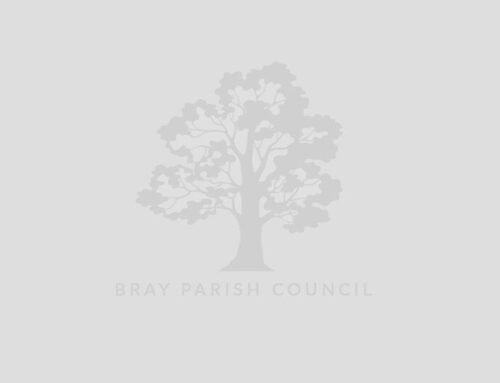Bray Parish Council along with many of its residents has long been concerned about Air Quality within the area. To check the validity of these concerns the Parish Council began air quality monitoring at 8 sites across the Parish in January 2020 in the hope for these to be sent as part of our submission to the Borough Local Plan but had to postpone the monitoring due to Covid. Monitoring began again in July 2021 and the Parish Council has recently received the 6-month report, the contents of which Councillors have found to be particularly concerning.
The summary of the report confirms that Bray Parish is an area with poor air quality, all of the sites currently being monitored are showing results that exceed WHO guidelines for health for NO2 of 10 ug/m3 as an annual mean, and the recommendation of the report is that more attention should be paid to these areas by RBWM. We remain concerned that we are unable to monitor the impact of pollution from aircraft, which we believe must exacerbate the impact to residents’ health even further.
Review the raw data and Annual Air Quality Status Reports:
Annual Air Quality Status Report 2025
Air Quality Monitoring Data 2025
Annual Air Quality Status Report 2024
Air Quality Monitoring Data 2024
Bray Parish Council – AQA – Summer Report – Aug 2022
Explanation of the raw data:
Bray Parish Council has been measuring air pollution using a technology called “Nitrogen Dioxide diffusion tubes”. These are little tubes that measure Nitrogen Dioxide and can be placed almost anywhere. The parish council have placed 13 tubes on lamp-posts and other structures around the parish.
Each month the parish council switches the tubes over for new ones and sends the old ones off to a laboratory. The laboratory analyses the contents to calculate the amount of Nitrogen Dioxide (NO2) in the air at each of the locations. These are the numbers you see in the documents.
The column we are mainly interested in is the one entitled “μg/m3“ which we read as “micrograms per metre cubed” and gives a value for the concentration of Nitrogen Dioxide at the prescribed location for the given month of exposure. By way of example if the value reads 30 μg/m3 at Canon Hill Way during September this means that the average concentration of Nitrogen Dioxide during September at Canon Hill Way was 30 micrograms per metre cubed.
But what do these numbers actually mean? Is 30 μg/m3 a low or a high value?
The question is not easy to answer because the results can be interpreted in different contexts and most of the regulation is focused on annual averages, not monthly values, so we have to look at a given location over the entire year.
Let us start with health. The World Health Organisation publishes exposure guidelines for a variety of pollutants including Nitrogen Dioxide and advises the following:
- The annual average at a location should not exceed 10 μg/m3
- The 24hr average at a location should not exceed 25 μg/m3 more than 3-4 times per year.
We can see that any location with a monthly measurement exceeding 25 μg/m3 is most likely to exceed the second health guideline and if every month is similar, then that location is likely to exceed the first health guideline too.
In addition to health, there is a regulatory and legal framework against which the UK government is legally accountable called the Air Quality Standards Regulations 2010. This sets reference limits for various pollutants including Nitrogen Dioxide and reads as follows:
- The annual mean concentration of NO2 must not exceed 40μg/m3
- No more than 18 exceedances of the hourly mean limit value (concentrations above 200 μg/m3)
The legal limit of Nitrogen Dioxide is 4x the level at which air is considered unhealthy.
It is important to note this distinction because whilst the air in many locations around the parish has been found to contain unhealthy quantities of Nitrogen Dioxide, the regional authority may be able to correctly state that they are not breaching any national objectives.
The negative impact upon our health is however will still be borne by us.

